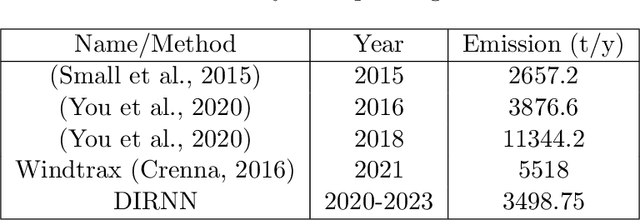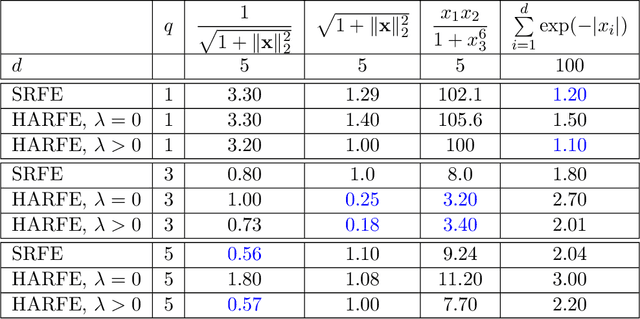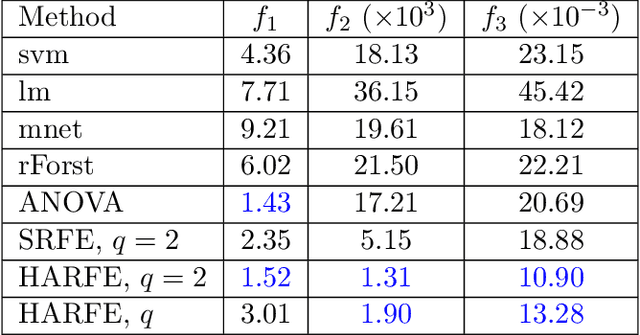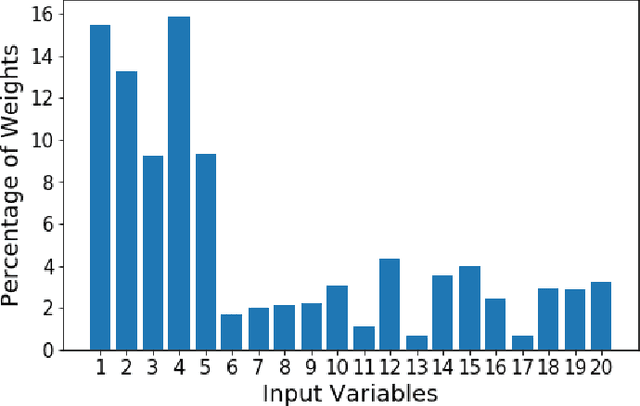Esha Saha
Methane projections from Canada's oil sands tailings using scientific deep learning reveal significant underestimation
Nov 11, 2024



Abstract:Bitumen extraction for the production of synthetic crude oil in Canada's Athabasca Oil Sands industry has recently come under spotlight for being a significant source of greenhouse gas emission. A major cause of concern is methane, a greenhouse gas produced by the anaerobic biodegradation of hydrocarbons in oil sands residues, or tailings, stored in settle basins commonly known as oil sands tailing ponds. In order to determine the methane emitting potential of these tailing ponds and have future methane projections, we use real-time weather data, mechanistic models developed from laboratory controlled experiments, and industrial reports to train a physics constrained machine learning model. Our trained model can successfully identify the directions of active ponds and estimate their emission levels, which are generally hard to obtain due to data sampling restrictions. We found that each active oil sands tailing pond could emit between 950 to 1500 tonnes of methane per year, whose environmental impact is equivalent to carbon dioxide emissions from at least 6000 gasoline powered vehicles. Although abandoned ponds are often presumed to have insignificant emissions, our findings indicate that these ponds could become active over time and potentially emit up to 1000 tonnes of methane each year. Taking an average over all datasets that was used in model training, we estimate that emissions around major oil sands regions would need to be reduced by approximately 12% over a year, to reduce the average methane concentrations to 2005 levels.
Diffusion Random Feature Model
Oct 09, 2023Abstract:Diffusion probabilistic models have been successfully used to generate data from noise. However, most diffusion models are computationally expensive and difficult to interpret with a lack of theoretical justification. Random feature models on the other hand have gained popularity due to their interpretability but their application to complex machine learning tasks remains limited. In this work, we present a diffusion model-inspired deep random feature model that is interpretable and gives comparable numerical results to a fully connected neural network having the same number of trainable parameters. Specifically, we extend existing results for random features and derive generalization bounds between the distribution of sampled data and the true distribution using properties of score matching. We validate our findings by generating samples on the fashion MNIST dataset and instrumental audio data.
SPADE4: Sparsity and Delay Embedding based Forecasting of Epidemics
Nov 11, 2022Abstract:Predicting the evolution of diseases is challenging, especially when the data availability is scarce and incomplete. The most popular tools for modelling and predicting infectious disease epidemics are compartmental models. They stratify the population into compartments according to health status and model the dynamics of these compartments using dynamical systems. However, these predefined systems may not capture the true dynamics of the epidemic due to the complexity of the disease transmission and human interactions. In order to overcome this drawback, we propose Sparsity and Delay Embedding based Forecasting (SPADE4) for predicting epidemics. SPADE4 predicts the future trajectory of an observable variable without the knowledge of the other variables or the underlying system. We use random features model with sparse regression to handle the data scarcity issue and employ Takens' delay embedding theorem to capture the nature of the underlying system from the observed variable. We show that our approach outperforms compartmental models when applied to both simulated and real data.
HARFE: Hard-Ridge Random Feature Expansion
Feb 06, 2022



Abstract:We propose a random feature model for approximating high-dimensional sparse additive functions called the hard-ridge random feature expansion method (HARFE). This method utilizes a hard-thresholding pursuit-based algorithm applied to the sparse ridge regression (SRR) problem to approximate the coefficients with respect to the random feature matrix. The SRR formulation balances between obtaining sparse models that use fewer terms in their representation and ridge-based smoothing that tend to be robust to noise and outliers. In addition, we use a random sparse connectivity pattern in the random feature matrix to match the additive function assumption. We prove that the HARFE method is guaranteed to converge with a given error bound depending on the noise and the parameters of the sparse ridge regression model. Based on numerical results on synthetic data as well as on real datasets, the HARFE approach obtains lower (or comparable) error than other state-of-the-art algorithms.
 Add to Chrome
Add to Chrome Add to Firefox
Add to Firefox Add to Edge
Add to Edge